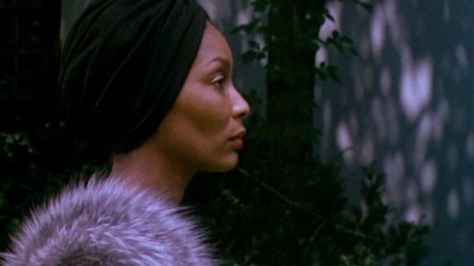
Format: Cinema
Release date: 30 January 2015
Distributor: Sky Vision
Director: Nick Broomfield
USA, UK 2014
105 mins
British documentarian Nick Broomfield – aka the man with the boom (and bumbling persona) – returns with this incisive look at the grim realities of life in South Central Los Angeles.
Broomfield is best known for his 1990s documentaries, including Kurt & Courtney and Aileen Wuornos: The Selling of a Serial Killer, while his investigation into an Iraq massacre, Battle for Haditha, drew much praise in 2007. His films, which tend to feature him in front of the camera as much as behind, spawned a host of imitators (Michael Moore and Louis Theroux among them). Now a sprightly 66, he’s back pacing the streets, of grimsville South Central, or else driving a black Mercedes, with son Barney (off camera) and local junkie come good, Pamela Brooks, in tow. Ms Brooks guides the Broomsfields around the poverty-stricken neighbourhood, and steals the show.
On the face of it, Broomfield’s film appears to be examining the murder trial of one Lonnie Franklin Jr, arrested in 2010 and charged with the murder of 10 prostitutes and transients, stretching back 25 years. However, it soon emerges that the number of victims could ‘run into hundreds’ as Broomfield himself points out, during his sobering voice-over introduction. As he and his small crew meet Franklin’s friends and neighbours, Broomfield wonders how on earth this behaviour could have gone undetected for so long (DNA links Franklin to the murders). He soon finds an LAPD indifferent to the welfare of the poor black communities affected. Drug abuse, particularly crack, appears to be rife.
The narrative takes an increasingly grim turn as Franklin’s neighbours and friends call Broomfield back (after initial encounters) to recall disturbing incidents in Franklin’s house that they had previously brushed off. Hence Franklin goes from Mr Nice Guy to Mr Weirdo pretty quickly. We hear of his horrific abuse of his victims (with his son, Chris, apparently observing through a peep hole). Hundreds of photos of unidentified women in compromising positions are found on his wall. There is the strong suggestion that he dumped many of the bodies in the local tip, where he used to work.
Local community leaders, including Margaret Prescod, head of the Black Coalition Fighting Back Serial Murders, prove particularly insightful. Some of Franklin’s former conquests (who managed to get away) relive their ordeals. Yet the LAPD remains silent, beyond a PR-driven press conference that hails Franklin’s arrest as a victory for law and order. They bluntly refused, apparently, to be interviewed.
Broomfield never actually questions Franklin’s guilt (which is reasonable, given the evidence against him). But he does throw a spotlight on this impoverished part of a famously wealthy city, demanding to know why the police investigating these serial killings did so little, for so long. As Prescod quite rightly says, if the victims were white women in Beverly Hills, the LAPD would be all over the case in a flash. It is a striking and powerful film, and certainly one of Broomfield’s best for quite some time.
Ed Gibbs


